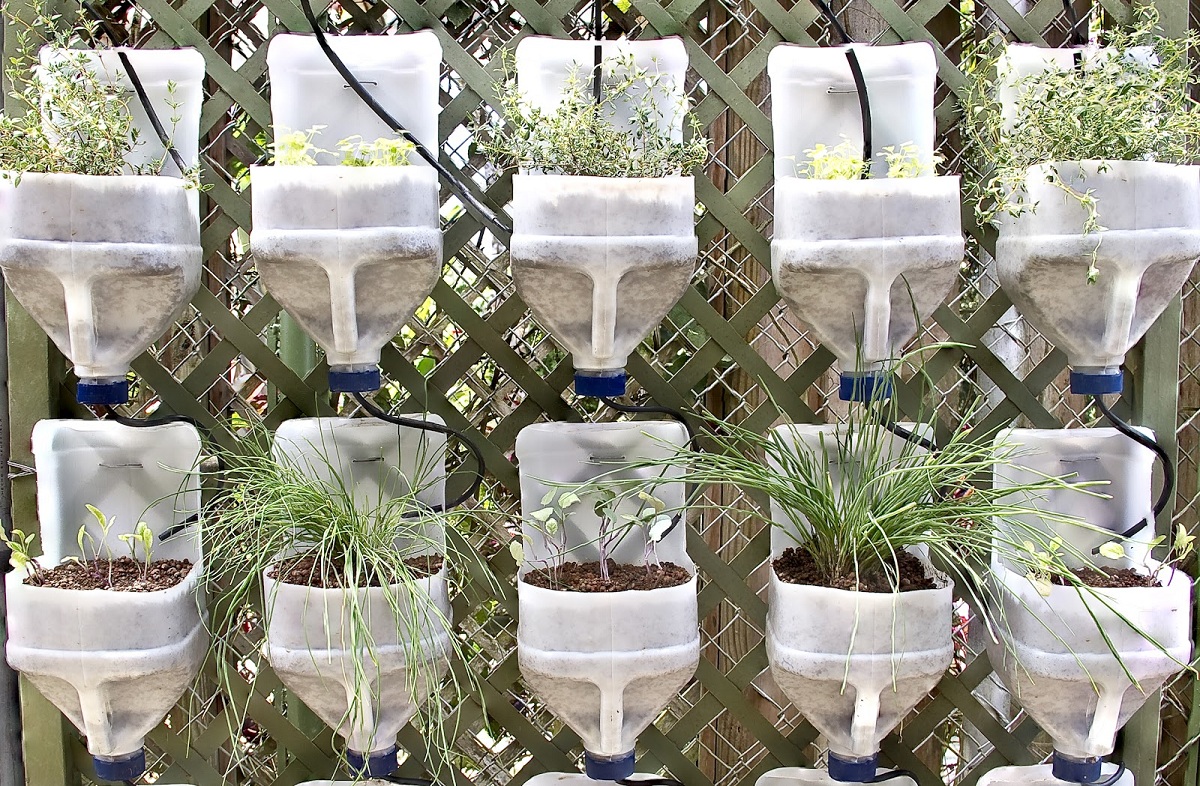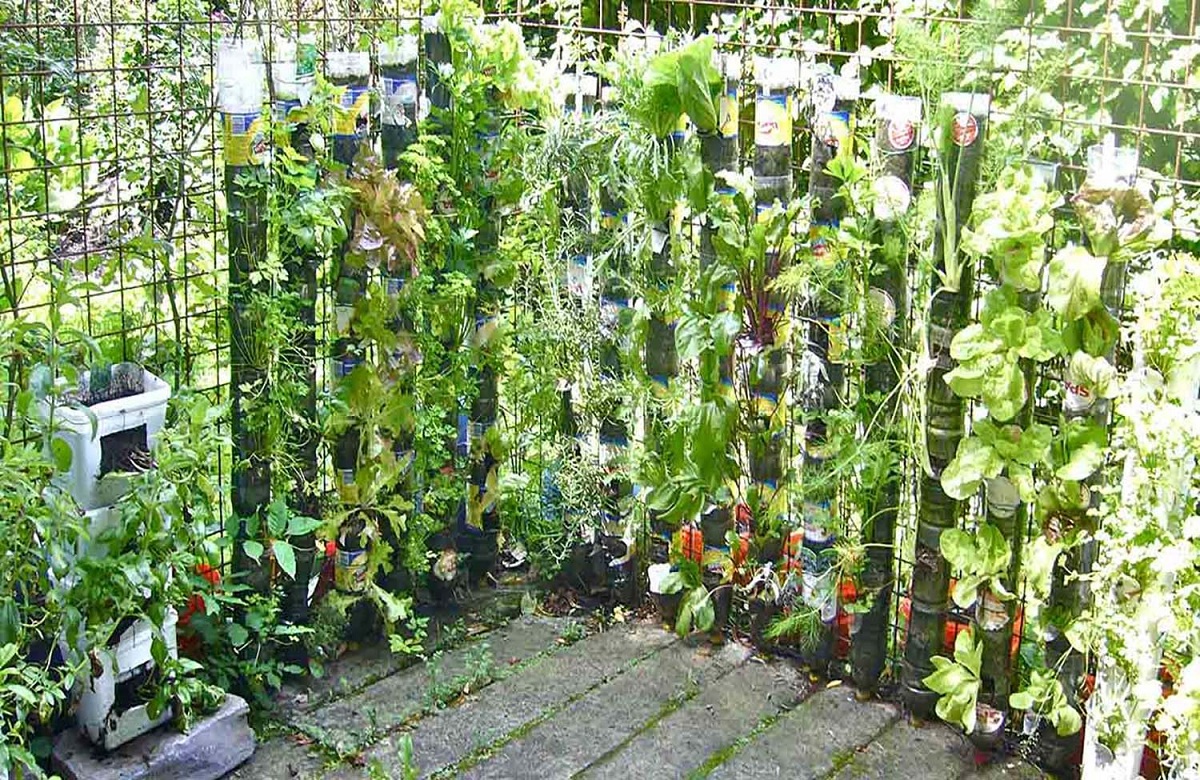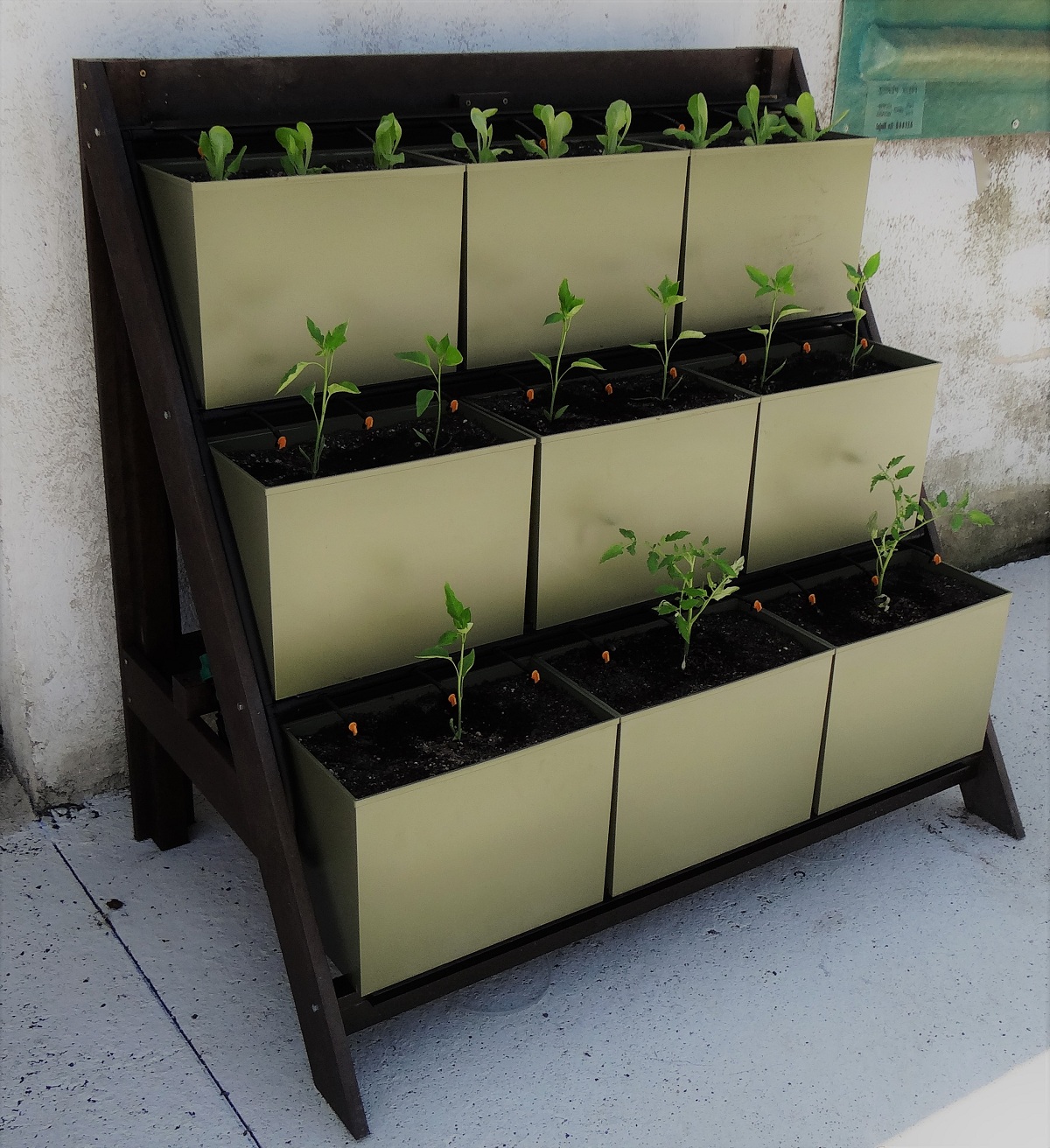
There are many people who are fond of urban gardens or home gardens. This is an area where you can grow your own crops while learning about gardening and agriculture. It can be a good use for the little ones and to be with the family. It also serves for self-sufficiency. However, many people do not have enough space to grow crops in this family garden. For this reason, a development idea called Vertical orchard.
In this article we are going to tell you about all the characteristics and function of the vertical garden.
Key features

As its name suggests, we are talking about growing plants in a vertical garden. Instead of occupying a horizontal space, we are going to plant vertically to develop the space much better. This way of life has been around for a long time and is a healthy alternative in tune with the environment. Little by little they are bad people who become aware of eating healthy foods and those products that we put in our mouths. The environment needs a little breather against fertilizers, herbicides, pesticides, etc. That are used in agriculture.
In this way, we achieve a possible development of crops at home without occupying too much territory. The activity of a vertical garden is related to a conscious diet and activities related to recycling and renewable energy. More and more people are joining this way of life in which they have an organic garden at home. There are several beautiful vertical garden designs that use recycled objects for this.
A way to create a vertical garden is to use crates, cardboard boxes, pallets, etc. The vertical garden structure can be walked by staff from one end to the other to be able to enjoy the interior. There is usually a large green blanket that covers the entire surface and the plants selected for this part are tolerable in the shade. It must be taken into account that the crops are not only going to be for food, but they can also be ornamental crops. The structure that we have left for our vertical garden can be designed in our style.
Vertical garden requirements

The plants selected for this must be tolerable to the shade at the same time that the surface of the structure must moderate the temperature to have a cool and airy interior. The idea of a vertical garden must take into account the installation of low environmental impact since it proposes a novel alternative in vertical gardens. This is a great example of how it is possible to recycle objects in order to create a unique space and take advantage of numerous species of plants that can grow if necessary a space on the ground and be planted in it.
In addition, originality comes into play in this type of project. And it is that a common object can be transformed into something more original and that it is formed to help other people to encourage them to create their own design of the vertical garden. You can have a green space at home without taking up much space and with a lot of originality. Take an example and follow the design and then transform it into something in your own style. Even without much space at home you can enjoy these plants with different and innovative proposals.
How to make a vertical garden

We are going to explain the main steps that you must take into account to make your own vertical garden. To make a vertical garden at home you only need a wall on which to mount the structure and containers for the placement of plants, soil and compost. Obviously there are also the plants that you are going to grow. The planters can be totally recycled. Like cancer in gardens, in vertical gardens they have some more specific cultivation techniques. There are various types of materials that can be used such as containers or pots.
Some of the most recommended materials are the following:
- Plastic jugs: The 5 liter ones are very easy to find and are quite large in size. We just have to place it upside down by cutting the upper part and we can have a good space to plant.
- Plastic bottles: They are suitable for smaller plants and can be placed by cutting them from the top.
- Wooden pallets: a plastic bag must be placed in the space of the pallets where the crops will be planted.
- Fabric shoe rack: It is another of the recycled utensils that we can recycle for our vertical garden. It is quite simple to use. We only have to place one plant in each compartment.
Design tips
Let's now give you some design tips for the vertical garden:
- Choose an area of the house where the sun shines for several hours at a time. The sun is an important component for plants to grow and crops to develop well. We must choose a wall that receives enough light.
- Choose the containers well: the most common are plastic or clay bottles. If we are going to build the garden for growing vegetables, the container must be more than 20 cm deep.
- Soil and compost: It is necessary to use a soil that is rich in nutrients and an organic compost that works for the pots.
- Know the plants we plant: We must know what type of plants we are planting and their type of growth. If it is a fast or slow growth, the amount of water and light they need, etc.
- Irrigation system: Being a vertical structure we can use various forms of irrigation system. The oldest of all is to make a small hole in the upper containers for the excess water to fall into the lower one. In this way, we can optimize irrigation and water much more efficiently.
As you can see, a vertical garden is a good way to learn about everything related to agriculture at home and it can be a very good activity to be with the family. I hope that with this information you can learn more about how to make a vertical garden and what its characteristics are.